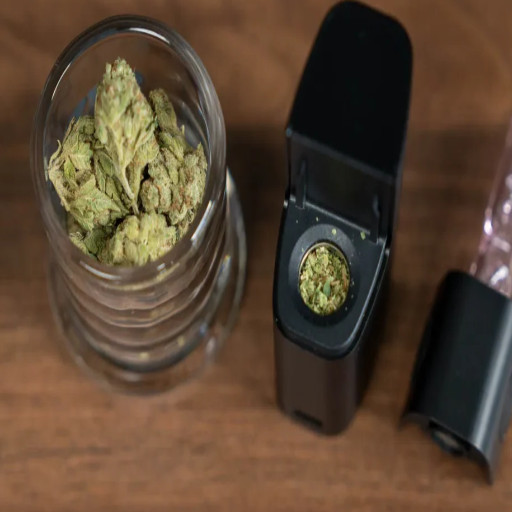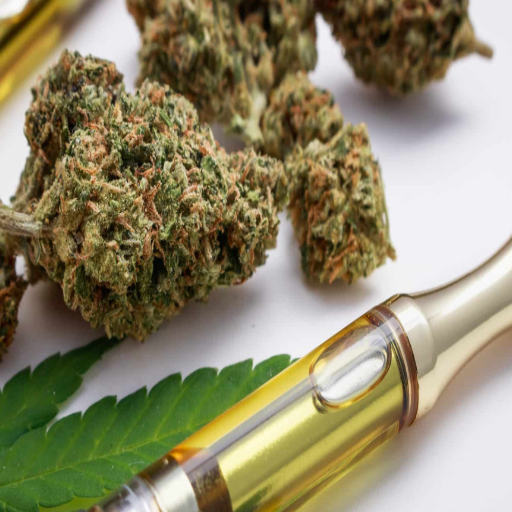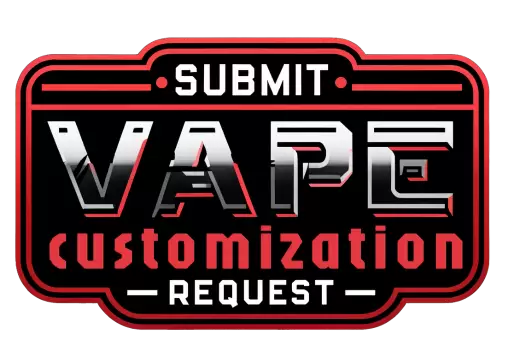Disposable vapes have grown increasingly popular for their convenience and simplicity, but determining when it’s time to dispose of them can sometimes be tricky. Unlike traditional vapes, disposable devices don’t always provide clear indicators of when they are no longer usable, leaving users guessing. This article is designed to eliminate that uncertainty by highlighting seven unmistakable signs that your disposable vape has run its course. Whether you’re a seasoned user or new to disposable vapes, this guide will help you understand the key indicators so you can maximize your vaping experience and avoid unpleasant surprises.
What are the common signs that your disposable vape is empty?

Decreased vapor production when your vape is running low
As a disposable vape runs out, one of the most noticeable signs is a lack of vapor output. This occurs because the e-liquid responsible for vapor creation is nearly depleted. The device requires e-liquid to engage with the heating component; otherwise, it can’t produce the dense vapor it usually does when fully stocked. This transformation tends to be slow at first, starting with reduced vapor output and later yielding almost no vapor. Users who depend solely on sight and touch to gauge the device’s performance will quickly realize that with each draw, the experience is less rewarding.
This phenomenon can be explained by looking at how disposable vapes are designed. All-in-one disposable vapes have a set amount of e-liquid and a battery that is built to be used once. They don’t provide recharges and stop working when the liquid runs out. The heating element within the device has to convert some material into vapor, but when e-liquid is close to running out, it becomes nearly impossible to change. In this case, the lack of vapor produced serves a purpose beyond annoyance; it also marks the point when the device can no longer serve any practical purpose. Trying to suck on an empty or near-empty vape results in a burnt taste because the heating coil starts to turn excess e-liquid or wick material into gas, something the wick isn’t built to handle when overheated.
Looking through the lens of engineering, the control systems in disposable vapes are basic and lack sophisticated liquid sensors. This makes changes in vapor production one of the most evident indicators users can rely on to understand the operation status of their device. For seamless bliss, it is best to track the number of times the instrument is puffed daily and regard the reduction of vapor as a consequence of expenditure. Understanding this can help users strategize having a spare device handy, which helps not disturb their rhythm throughout their vaping activity.
Understanding the burnt taste when e-liquid is depleted
A burnt taste while vaping is a recurrent problem when the e-liquid in the tank or pod of the device is low or does not completely soak the wick. The problem originates from the wick, which is generally cotton, overheating due to the lack of vapor-producing e-liquid. This results in the burning of the wick, which in turn releases sharp and terrible tastes.
Research suggests this is more prevalent when users are vaping at high wattages above what is recommended for the device’s or coil’s resistance, as increased temperature dries the wick even faster for higher wattages. Preventive techniques involve checking the e-liquid level frequently, proper coil priming, which ensures sufficient soaking of e-liquid into the coil, and adherence to the specified watts per coil used. These approaches help prevent excessive damage from dry hits or burnt wicks while reducing coil wear.
Alongside the recent improvements in vaping technology comes the option of e-liquid level sensors or notifications to prevent users from dry-hitting their tanks. Devices that employ these systems issue alerts or automatically decrease power when low liquid levels are detected, solving a manual problem using technology. The advancements improve the experience of the user and the durability of the equipment.
Changes in indicator light signals on disposable vapes
The latest changes in disposable vape technology have propelled the development of more advanced indicator light systems intended to provide greater feedback about the device’s status to the user. In the past, the indicator lights were limited to quite basic functions of indicating if the device is on or off and if the battery is empty. Now, modern multi color LED systems integrated in disposable vapes can serve to convey much more information of greater value.
The light system in some of the devices is set to use green, blue, or even white lights to show varying levels of power, while others may blink red to indicate a low battery or other errors. Moreover, some models use blinking light patterns to alert users of other problems, such as overheating or blocked airflow. Because of these added signals, users can get instant feedback, which, in most cases, is accurate, without needing to carry out intensive diagnostics.
In conjunction with sophisticated power management systems, these lights add to comfort afforded to the user and also to the endurance of the device. These lights function as responsive signals which aid in enhancing the operation of the device and the safety of the users thus increasing the overall trust of the device.
How to know when a disposable vape is almost empty before it stops working?

Monitoring changes in flavor intensity and e-liquid level
One of the most reliable indicators when monitoring a disposable vape for its usability is flavor intensity. A burnt or faint taste often accompanies insufficient e-liquid supply, warning users about equipment replacement or disposal. Consider every flavor and scent a vape possesses uniquely, as it signals when the device is about to surpass its usable range.
Although the casing on most vapes is non-transparent, some devices feature design elements that act like a gauge. Users can evaluate the likely remaining e-liquid through small windows, ensuring they do not suffer from withdrawal-like interruptions during usage. Vapes without transparent viewing options rely on visual cues, which, when paired with average puff counts or daily usage, enhance insight on when the device is likely to be non-operational.
By integrating meticulous tracking of flavor shifts along with visual changes (if applicable), users can notice the changes in their disposable vape and anticipate the timing required for replacement, hence optimizing performance. This method provides uniform functionality while improving the user experience.
Recognizing when the vape juice begins running low
A significant decrease in vapor production is frequently the primary indicator. When a device produces considerably less vapor while being actively used and properly charged, this is a sign that the e-liquid is running out. Also, the abundance of flavor while using the vape juice may drop as it gets used up, leading to muted taste profiles. This is happening because the remaining liquid isn’t enough to fully soak the coil and thus affect the flavor delivery.
If the design of the device allows it, the pod or tank can be visually checked for an accurate reading of the remaining e liquid. The majority of pods or tanks that are transparent have sections or indications where monitoring liquid is easy. Also, users should start paying attention to the noise their device makes, as the device may make an obvious dry or crackly noise which would mean that the wick is being starved of juice.
By adopting these observational methods along with regular maintenance tasks, users can avoid damage to the device and maintain its optimal performance.
Understanding the number of puffs remaining in your disposable
Analyzing how many more puffs can be taken from a disposable vape device can be carried out using either Observational or Technical Methods. The majority of disposable devices come with a cap on puff count set by the manufacturer, and this is usually in the 200-500 puff range reacting both on model and capacity. The actual number of puffs achieved can also be influenced by factors such as the length and intensity of each inhale because shorter, lighter draws consume less liquid and battery power.
In addition, advanced disposable models may integrate draw-activated LED signals, which flash/change color to denote depletion of battery or liquid. A more reliable method would be to monitor the frequency of usage alongside the stated puff limit which can also serve to reduce the uncertainty in estimations.
Vaping is often an uninterrupted activity and by combining the observatory clues and the strict instructions provided by the manufacturer when developing the vape, users can accurately estimate the number of remaining puffs while ensuring that interruptions due to lack of preparation are mitigated. This approach serves to maintain an optimal vaping experience while effectively extending the functionality of disposable devices.
What happens when a disposable vape is empty?

Why you might experience a burnt coil and harsh inhale
When a disposable vape is empty, the absence of liquid will cause the coil to burn the wick inside the device. This device undergoes what is called a “Dry Hit.” The Coil is supposed to have something to vaporize to cool down the offsetting heat; without it, the coil overheats. The wick, which is commonly made out of cotton, has the job of e-liquid absorption. In the case that it is volatized, it will endure intense scorching and tremendous heat. This will produce a burnt flavor as well as harmful byproducts that, when inhaled several times, will compromise the experience and damage one’s health.
Furthermore, constantly using an empty vape or one that is close to running out of liquid will cause the coil to degrade. Every engineering component is designed so their use should only happen within a fixed range; in this case, when oil cooling is consistently present, dissipating thermal stress is enabled. Not having this will result in permanent deformation and damage to the coil. The construction failure this vaping machine comes with will worsen the amount of vapor produced, which leads to throat combustion, slashing the strength of every breath taken from the device. In this scenario, the user is left with nothing but a vapourized residue instead of a precisely formulated e-liquid mix.
Many disposable vapes come with very basic indicators that notify users when e-liquid is either low or fully depleted. Even so, users often ignore or do not see the indicators and end up using the device past its optimal level, which diminishes performance. That is why it is important to follow the manufacturer’s guidelines. From the information given, it is apparent that determining the e-liquid level and the coil functionality will determine how smooth the inhales will be, making the experience effortless and enjoyable.
How blinking lights indicate your disposable vape is done
The blinking lights on a disposable vape serve as an essential device issue indicator. Usually, the light indicators are available to provide the user with a notification sign of when the vape has reached the used-up stage. A blinking light during a vape session frequently implies that the battery is dead and incapable of energizing the heating element. Most disposable vapes come with a built-in battery that is nonrechargeable, which means once the battery is drained, the device becomes useless.
Also, blinking lights might mean the e-liquid compartment is void of liquid. This is especially true for many models that are designed with a stop function to prevent dry hits which might lead to the coil being fused nad produce nasty taste from burning. The specific blinking patterns of lights as well as the distinguishing beating may differ from one manufacturer to another, but common devices come with user instruction guides that explain these pointers for the user convenience.
These alerts are designed to protect the user and keep the device operating efficiently. For instance, apart from a low battery or depleted e-liquid, blinking indicators may also signify other problems like a disconnection between the coil and the battery. Proper response to the light patterns ensures the device performs without problems like poor vapor production and coil damage.
How to extend the life of your disposable vape?

Proper usage techniques to maximize puff count
Best practices and proper usage techniques are fundamental when it comes to maximizing the puff count on a disposable vape. One of the more important points when sustaining puff count is maintaining an adequate pumping rhythm. Rigid and moderate draws of the device as opposed to strong and prolonged puffs prevent coil overheating, which reduces efficiency and risks damage. Also, giving enough time in between puffs allows the wick to soak up e-liquid, which avoids dry hits while preserving the device’s functionality.
Another essential consideration is the storage environment. Vapes should be kept out of reach of direct sunlight or extreme heat, as both environments can lead to e-liquid evaporation or leaking. A shortfall in sunlight is an area where enabling the device to remain upright can prevent clogging and uneven wicking. Additionally, reducing the number of times the vape is handled as the body is being pressed can lead to the unintentional damaging of internal components.
Finally, keep an eye out for any indications of issues, such as airflow blockages or uneven vapor production, especially those in early-stage development. By taking proactive measures to clean the mouthpiece and make sure the airflow is unobstructed, the lifespan of the device can be enhanced considerably. Following these steps helps maintain the device’s performance, which maximizes the number of puffs while ensuring a seamless vaping experience.
Storage tips to preserve e-liquid quality
The proper storage of e-liquids is crucial for the color accuracy, intensity of taste, intake of nicotine, and the e-liquids’ quality over time. Flammable liquids should be maintained at room temperature, which ranges from 15 to 25 degrees Celsius, while preventing exposure to heat, moisture, light, and air. When stored under these elements, the rate of degradation of key components such as flavoring and nicotine is significantly reduced. The temperature range of 60 to 75 degrees Fahrenheit assists with preventing the thickening of the contents storing e-liquids.
It is essential to use amber or opaque bottles as shielding from harmful UV rays potentially transforms the chemical compounds of the e-liquid. Strong oxidation is capable of driving fine tobacco or the content of nicotine within the e-liquid bottle and will ultimately lead to a chemical reaction taking place with oxygen which ultimately causes damage.
The use of containers made from plastic is not recommended when storing e-liquids for long periods, as they are susceptible to absorbing flavor chemicals that could lead to e-liquids becoming contaminated. It is recommended to use food-approved glass containers as they ensure preservation. As most e-liquids under set storage conditions maintain their quality anywhere between 1 to 2 years, it is better to always mark the date on the label so tracking the age of the e-liquids becomes easier.
By following these instructions, users can maximize the life of their e-liquids without deteriorating the taste and performance, ensuring reliable satisfaction for the entire duration of their use.
What to do with an empty disposable vape?

Proper disposal methods for used vaping devices
The correct disposal of used vaping devices is sometimes overlooked. However, it is here that one must practice environmental responsibility. Impractical disposal of vapes can result in unleashing toxic chemicals and electronic waste. Still, disposable vapes usually come with a nicotine residue, lithium-ion battery, and plastic that all need specific handling.
First off, one must check the local laws as disposal guidelines differ for each region. Many regulations have set disposal collection centers for used disposable vapes and capsules. Batteries especially have to be dealt with care. Tossing them into regular trash is unsafe due to leakage and flammability risks. E-waste disposal, recycling services, or specialized programs can look after these components safely. Vape shop retailers or manufacturers sometimes also offer bring-back programs where used devices can be returned for proper recycling.
Covered under hazardous waste services, these guidelines standing on suggested protocols greatly help the public and ecosystem. Products marketed containing nicotine have to abide by the same rule. Care has to be practiced while disposing of the liquid element in the device.
When to consider rechargeable disposable options
Rechargeable disposable vape devices have recently been touted as a more cost-effective and sustainable option, especially for frequent users. These devices allow users to recharge the battery multiple times while maintaining the convenience of a disposable unit. Choosing rechargeable disposables mitigates the amount of waste produced because less batteries and casings are discarded in comparison to traditional single-use disposables. Along with this, recent developments in battery technology have enhanced the efficiency, durability, and safety of rechargeable options, making them a better choice for eco-friendly consumers.
From a financial standpoint, rechargeable disposables often provide a lower total cost of ownership. Although the initial purchase price may be slightly higher when compared to regular disposables, the increased use due to new batteries extends the device’s reliance on frequent replacements. This is especially advantageous for consumers who vape regularly, as the device eliminates the single-use purchase expenses.
Another important factor to consider is performance reliability in rechargeable disposables. They provide the same amount of power delivery throughout the entire liquid consumption cycle, thus improving user experience. Those committed to the eco-friendly side of sustainability while minimizing effort need look no further as rechargeable disposable vape devices settle on ease of use and responsibility.
References
Construction of electronic cigarettes
Frequently Asked Questions (FAQs)
Q: How do I know when my disposable vape is done?
A: There are several clear indicators that your disposable vape pen is done. Watch for diminished vapor production, a weaker flavor, burnt hits, changes in LED light behavior, reduced battery performance, or if the device feels unusually light. Most disposable vapes are designed to run out of e-liquid and battery power simultaneously, so when you notice these signs, it’s time to replace your device with a new disposable.
Q: What does a burnt hit on a disposable vape mean?
A: A burnt hit is one of the most obvious signs your disposable vape is nearly empty. This harsh, unpleasant taste occurs when there’s insufficient vape juice to the coil, causing it to burn the wick instead. When your disposable is getting dry, you’ll notice this burnt flavor immediately. If you experience this consistently, it means your device is empty and should be replaced rather than continuing to use it.
Q: How can I tell when a vape pen is running low on e-liquid?
A: To tell when a vape is running low on e-liquid, pay attention to the vapor production, which will noticeably decrease. The flavor will also become less intense or change slightly as the device is nearly empty. Some disposable vape pens have a window to check e-liquid levels visually. Additionally, if your vape feels lighter than when you first started using it, this indicates the e-liquid is running low.
Q: Do disposable vape pens give any visual indicators when they’re almost done?
A: Yes, many disposable vape pens include visual indicators to tell if your disposable vape is nearing empty. The LED light might blink differently or change color when the battery is low. Some models have a small window that lets you see the remaining e-liquid level. Modern disposables may even have smart features that blink a specific number of times to indicate the device is empty or the battery is depleted.
Q: Will my vape life be extended if I take smaller puffs?
A: Yes, taking smaller puffs can modestly extend your vape life. When you take a puff, you’re consuming both battery power and e-liquid. Shorter, gentler draws use less of both resources. However, the effect is minimal since disposable vapes are designed with a specific capacity. The device will still be nearly empty after the intended number of puffs, regardless of how you pace yourself. For maximum efficiency, take regular, moderate puffs rather than aggressive, long draws.
Q: Is it normal for my disposable vape pen to produce less vapor when it’s running out?
A: Absolutely, reduced vapor production is one of the primary ways you can tell your disposable vape pen is empty or nearly empty. This happens because there’s less e-liquid available to be vaporized, and often the battery is simultaneously weakening. As you bring a vape to your lips and notice significantly less vapor after exhaling, it’s a reliable sign that you’ll need a new disposable soon.
Q: How do I know when it’s time to replace my disposable vape rather than trying to make it last longer?
A: It’s time to replace your disposable when you experience multiple signs of depletion: consistently weak vapor production, faded flavor, burnt hits, or the LED light blinking differently than normal. If you find yourself having to pull harder to get vapor or the device feels very light, these are clear indicators. Continuing to use a vape that’s run out can damage the coil and lead to unpleasant experiences. When your device shows these signs, it’s best to properly dispose of it and switch to a new vape.
Q: Can temperature or storage conditions affect how quickly my disposable vape becomes empty?
A: Yes, environmental factors can impact how quickly you run out of vape juice. Storing your disposable vape in extremely hot conditions can cause the e-liquid to thin and potentially leak, making the device empty faster than expected. Very cold temperatures can thicken the liquid, reducing flow to the coil. For optimal vape life, store your device at room temperature when not in use, avoid leaving it in direct sunlight or in a hot car, and keep it upright to prevent leaking that could prematurely empty your disposable vape pen.







